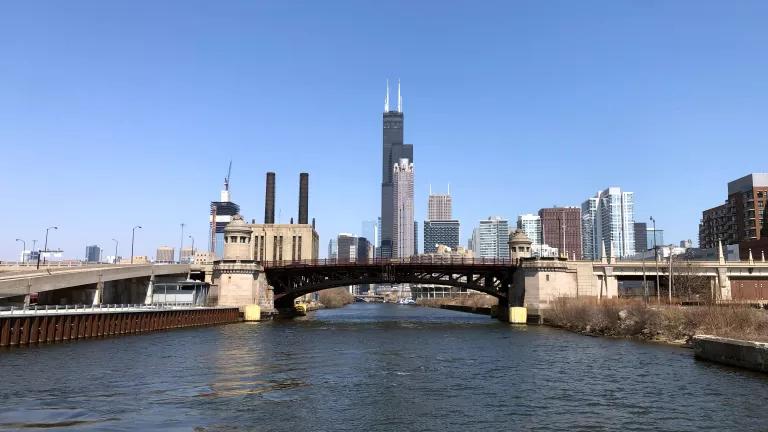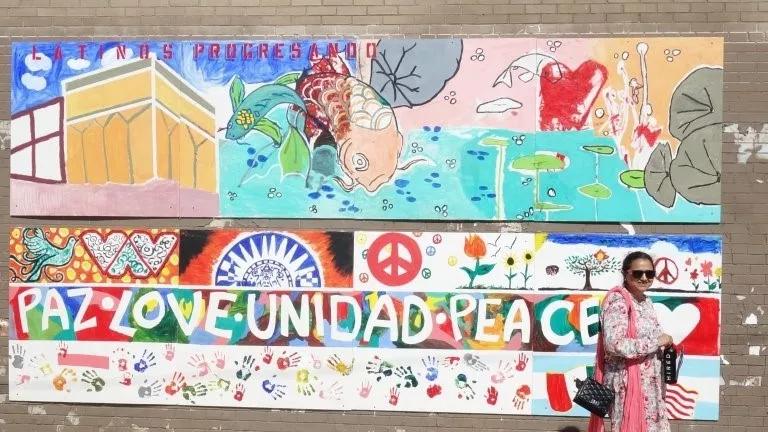Chicago River Flooding a Clear Sign of Bigger Issues to Come
Who says you can't see climate change? Flooding all over Chicago, including rivers running backwards and bringing huge volumes of sewage to Lake Michigan, are a troubling reminder of growing infrastructure stresses that threaten the region.

The Chicago River
Who says you cannot see climate change? Look all around Chicago right now and the evidence is pretty hard to miss as flooding impacts the region.
As the rain fell, it overwhelmed the region’s stormwater infrastructure—in the City, dumping sewage laden water into the area waterways in 64 different places. Eventually, the waterways got so filled, they were higher than the levels of Lake Michigan. Water flows downhill, so it is now flowing into the Lake from both the main branch of the Chicago River and Wilmette.
And...lots of that water ended up in basements.
And the Riverwalk was inundated.
And, the garage at River City apartments.
Flooding blacked out the Sears...err, Willis Tower too.
All that ugliness comes about from a combination of inadequate infrastructure and increasingly ferocious weather that has was long-predicted by climate scientists.
The river is at the heart of a broken system. It anchors Chicago's water infrastructure but increasingly fails to deal with the burden of the sorts of violent weather we have been seeing in recent years.
In the wake of storms a few years back, coverage of a similar river re-reversal touched on the climate connection after a spokesman for the Chicago Department of Water Management told Medill News Service:
"This is a new kind of storm associated with climate change. It's been around for five or six years. Other storms are rather local, but in this case the entire region got really walled.”
And from the same article:
These extreme flooding events highlight an underling pattern of overall wetness over the past two decades, according to Illinois state Climatologist Jim Angel.
Angel said seven-and-a-half inches of rainfall has been used as a benchmark to characterize a “100-year storm” in the past but said the number isn't as useful anymore, as sizeable storms occur more commonly.
“We keep getting hit over and over again,” Angel said. “I suspect it's safe to call it climate change.” The trend has also been for more extreme cases of precipitation as opposed to temperature, he said.
Recognizing climate trends is one thing, but dealing with the effects of these trends is another. Angel said the flood affected him, as his flight out of O'Hare was delayed Thursday.
“The big challenge for any big city is that we have large areas of concrete, rooftops. It's really hard for water to soak in,” he said. “It seems like there's always more of a risk in an urban area.”
In the face of the COVID-19 pandemic, these threats take on a new concern. In both the city and suburbs, boats had to be used to evacuate people. And of course, social distancing becomes a lot harder when you don’t have a place to distance...
There are no winners when it comes to climate change. None. But Chicago can be positioned to lose a whole lot less than most other major cities if work begins now. Among many other things, that means taking a fresh look at the assumptions made a century ago about the conditions that the reversed waterway would be operating under—and those made in more recent decades when the regions tried to dig its way out of the flooding situation, something that most parties agree has failed to keep up with the impacts of climate change (a source of litigation too). That means embracing green infrastructure—using natural systems to collect, hold and filter stormwater—something that Chicago led in with a spate of green-roof construction not long ago, but has fallen woefully behind on.
It won't be easy. And it won't be cheap. But accepting the status quo of billions of gallons of sewage going out into Lake Michigan—is less than palatable. We reversed the river a century ago to avoid exactly what we saw this week. But if we don't take the advance of climate change into account, we will see ugly images like this a lot more frequently.




